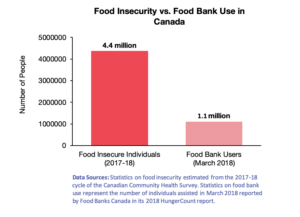Bank Street Model
When I was researching models and approaches I chose this model because I had no idea about what it was and because I came across this quote “children’s development unfolds at varying paces and through interaction with the world” (https://edpolicy.stanford.edu/sites/default/files/publications/scope-report-learning-play-lilana-web.pdf) I thought this quote really spoke to my own view of children and their development.
The History of Bank Street Model
In 1916 an educator named Lucy Sprague Mitchell put together a group of psychologists, anthropologists, educators, social workers and medical professionals to study children’s development. This group of professionals were called the Bureau of Educational Experiments. The goal was to find out what types of environments best supports children’s development, and nourishing children’s potential. The data gathered from this study was then meant to be used to educate other professionals to recreate these successful classroom environments. Mitchell documented that through her observations she discovered that children are explores above anything else. In the class room children are reaching out and exploring everything they can get their hands on. Therefore the environment that they learn in should be “…big enough, varied enough; to call forth all their young powers of sense and imagination” (https://eduate.bankstreet.edu/cgi/viewcontent.cgi?article=1020&context=books). The reason why it is called the Bank Street Model is because from 1930-1970 it was located at 69 Bank Street in New York City.
The Philosophy of Bank Street Model
Bank Street Model based centres, like most philosophies, have a morning meeting, calendar time, outside time and a flexible topic that is being discovered. This topic is based on the children’s interests as they are child-centred programs. There is a large emphasis on the child as a whole and educating the child in the domains of emotional, social, physical and intellectual. Educators that work within the Bank Street Model believe that cognition and emotions must be equally supported in teaching situations. In this way the learning that occurs is interdisciplinary. The classroom setting is a collaborative experience. The child is valued and encouraged to be a learner, teacher and a classmate. Families are encouraged to volunteer and are incorporated in the child’s education. This family feel is evident at many levels from volunteers in the class room, to fundraising and from being apart of the hiring committee to a family bulletin board in the centre. Scaffolding is evident within the Bank Street philosophy by observing, guiding with questions and encouraging curiosity. Hands- on and experience- based learning is an integral part of this model. It is believed that play is an important piece of a child’s learning and development. There is a strong feeling of progressive teaching and education in action in the Bank Street classroom. New studies are being put into practice and providing a setting for on going teacher training, educational research and a continuous development of curriculum and materials.
Quality Indicators for the Bank Street Model
Program: Bank Street Model- experience-based, interdisciplinary, collaborative, educating the whole child.
Values: Valuing and reinforcing the child’s integrity as a learner, a teacher and a classmate.
Experiences: Children are invited to experience their environment through exploration imagination and play
Outcome: Children are developing at their own pace and supported to develop across all domains ( emotional, social, physical and intellectual)
Current/ or Local Scene of the Bank Street Model
Today the Bank Street Model has moved from 69 Bank Street to West 112th Street in New York City where there is a graduate school to train teachers; a full program of children’s services, including the school for children and an array of out reach programs for the community. The school for children is broken down into three different programs one program for nursery- kindergarten, one for grade one- grade four and the final program is for grade five- grade eight. I also found a website for a centre in New Jersey that has a Bank Street based model. There are no local examples of the Bank Street Model I could not even find anything in Canada at all.
References:
https://eduate.bankstreet.edu/cgi/viewcontent.cgi?article=1020&context=books
Lydia Bach
https://edpolicy.stanford.edu/sites/default/files/publications/scope-report-learning-play-liliana-web.pdf
Dietze, B., & Kashin, D. (2016). Empowering pedagogy for early childhood education. Toronto, Ontario. Pearson Education Canada INC.



